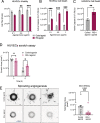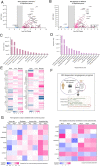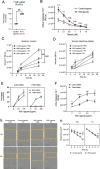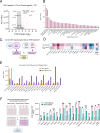Thymidine phosphorylase facilitates retinoic acid inducible gene-I induced endothelial dysfunction
- PMID: 37100811
- PMCID: PMC10131517
- DOI: 10.1038/s41419-023-05821-0
Thymidine phosphorylase facilitates retinoic acid inducible gene-I induced endothelial dysfunction
Abstract
Activation of nucleic acid sensors in endothelial cells (ECs) has been shown to drive inflammation across pathologies including cancer, atherosclerosis and obesity. We previously showed that enhancing cytosolic DNA sensing by inhibiting three prime exonuclease 1 (TREX1) in ECs led to EC dysfunction and impaired angiogenesis. Here we show that activation of a cytosolic RNA sensor, Retinoic acid Induced Gene 1 (RIG-I) diminishes EC survival, angiogenesis and triggers tissue specific gene expression programs. We discovered a RIG-I dependent 7 gene signature that affects angiogenesis, inflammation and coagulation. Among these, we identified the thymidine phosphorylase TYMP as a key mediator of RIG-I induced EC dysfunction via its regulation of a subset of interferon stimulated genes. Our RIG-I induced gene signature was also conserved in the context of human diseases - in lung cancer vasculature and herpesvirus infection of lung endothelial cells. Pharmacological or genetic inhibition of TYMP rescues RIG-I induced EC death, migration arrest and restores sprouting angiogenesis. Interestingly, using RNAseq we identified a gene expression program that was RIG-I induced but TYMP dependent. Analysis of this dataset indicated that IRF1 and IRF8 dependent transcription is diminished in RIG-I activated cells when TYMP is inhibited. Functional RNAi screen of our TYMP dependent EC genes, we found that a group of 5 genes - Flot1, Ccl5, Vars2, Samd9l and Ube2l6 are critical for endothelial cell death mediated by RIG-I activation. Our observations identify mechanisms by which RIG-I drives EC dysfunction and define pathways that can be pharmacologically targeted to ameliorate RIG-I induced vascular inflammation.
© 2023. The Author(s).
Conflict of interest statement
The authors delare no competing interests.
Figures




References
Publication types
MeSH terms
Substances
Grants and funding
LinkOut - more resources
Full Text Sources
Molecular Biology Databases
Research Materials
Miscellaneous

